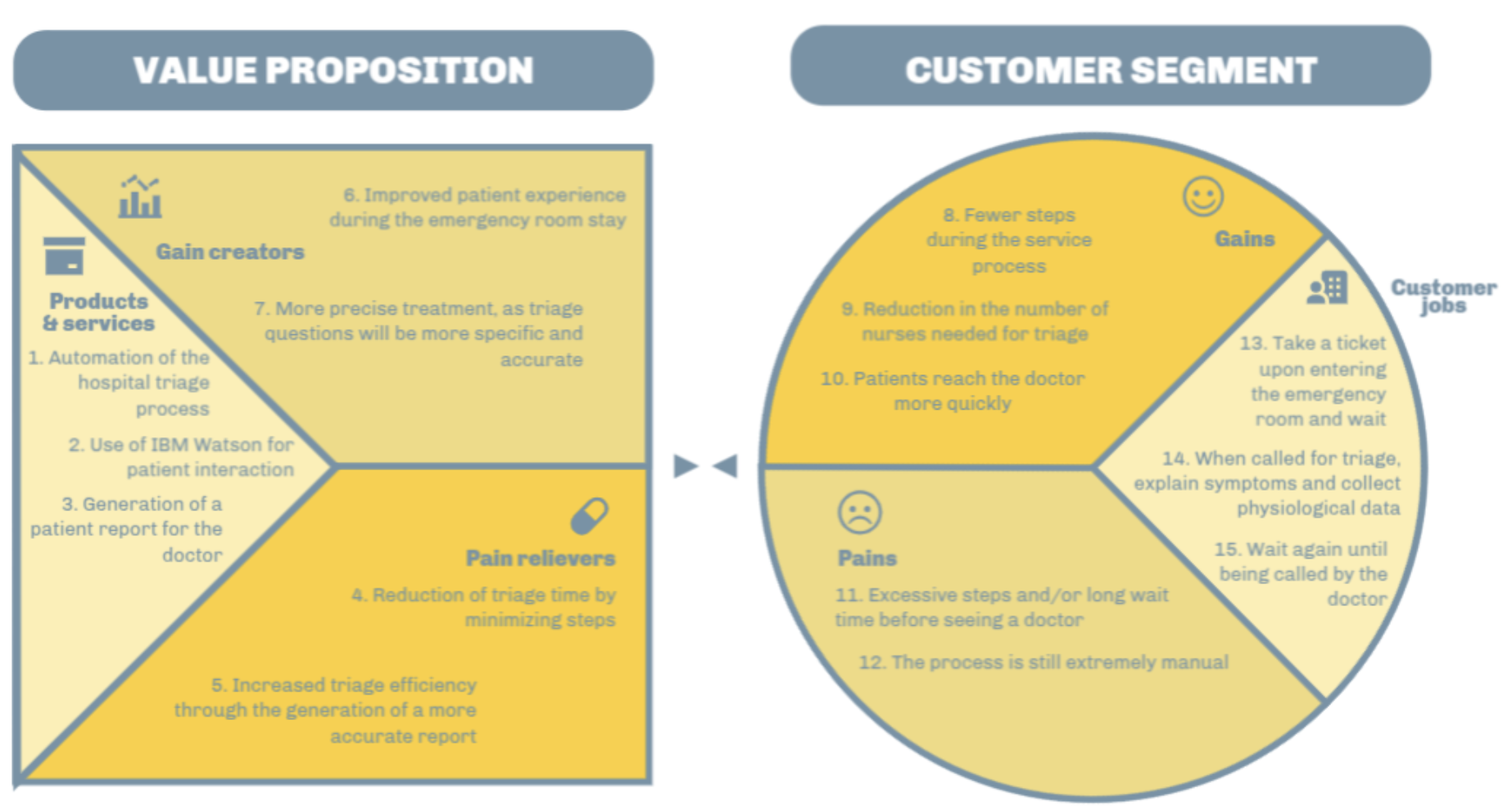Value Proposition Canvas

The Value Proposition Canvas is a strategic tool that helps companies define and clearly communicate the value they offer to their customers. It allows businesses to identify key tasks, pains, pain relievers, value propositions, gain creators, and gains that they provide to their customers, facilitating the development of effective strategies to meet market needs.
VALUE PROPOSITION
Products & Services
- Automation of the hospital triage process: The entire manual process used today will be replaced by a fully automated triage powered by AI, reducing human intervention and increasing efficiency.
- Use of IBM Watson for patient interaction: The AI system will communicate with patients, ask relevant questions, and gather necessary information in a structured manner, improving accuracy and consistency.
- Generation of a patient report for the doctor: A detailed report summarizing the patient’s symptoms and physiological data will be automatically generated and sent to the doctor, allowing for faster and more informed decision-making.
Pain Relievers
- Reduction of triage time by minimizing steps: By automating data collection and initial analysis, the triage process will be significantly faster, reducing patient waiting times.
- Increased triage efficiency through the generation of a more accurate report: AI-driven triage ensures that the information provided to the doctor is clear, structured, and relevant, minimizing errors and miscommunication.
Gain Creators
- Improved patient experience during the emergency room stay: The automation of triage will create a smoother and more predictable process, reducing patient anxiety and frustration rate.
- More precise treatment, as triage questions will be more specific and accurate: AI will tailor questions based on patient responses, leading to a better understanding of the condition and more effective medical treatment.
CUSTOMER SEGMENT
Gains
- Fewer steps during the service process: Patients will experience a simplified and streamlined triage process, making their visit to the emergency room faster and more convenient.
- Reduction in the number of nurses needed for triage: By automating initial assessments, hospitals can optimize staff allocation, allowing nurses to focus on critical cases.
- Patients reach the doctor more quickly: With AI handling initial triage, patients will spend less time waiting and more time receiving necessary medical care.
Pains
- Excessive steps and/or long wait time before seeing a doctor: The current manual process requires multiple interactions and validations, often leading to long delays before a patient receives medical attention.
- The process is still extremely manual: Nurses and staff must manually record patient information, increasing the likelihood of errors and inconsistencies.
Customer Jobs
- Take a ticket upon entering the emergency room and wait: Patients traditionally receive a numbered ticket and must wait in line before speaking to a nurse, which can take a long time.
- When called for triage, explain symptoms and collect physiological data: Patients describe their symptoms, and nurses manually take notes and measure vital signs, leading to potential delays.
- Wait again until being called by the doctor: After triage, patients must wait again until a doctor is available to review their case, adding further delays to receiving treatment.